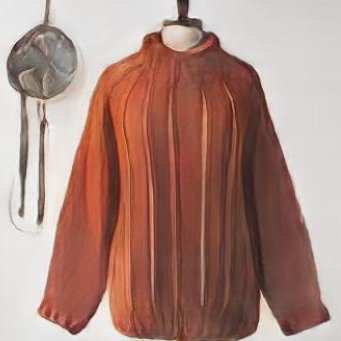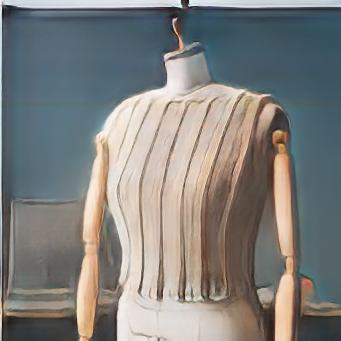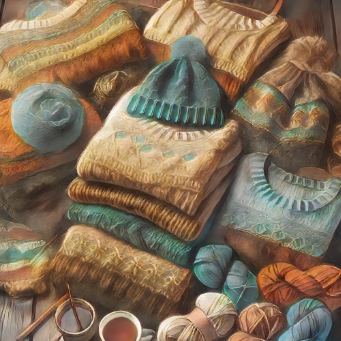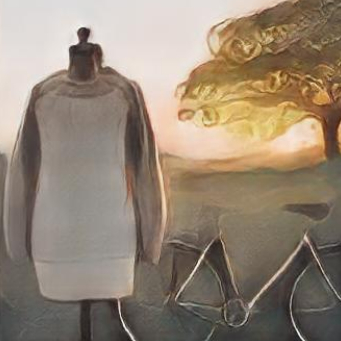Your cart is currently empty!
Handmade Clothing: The Heart of the Slow Fashion Movement
Fast fashion is like the junk food of the clothing world—cheap, fast, and leaves you feeling a little gross afterward. Its impact on the environment, workers, and our sense of what clothes should actually mean is staggering. Enter slow fashion: a movement that champions sustainability, intentionality, and quality over quantity. And let me tell you, as someone who’s been knitting long enough to have yarns older than some of you reading this, handmade clothing doesn’t just align with slow fashion principles—it is slow fashion.
Handmade Projects: A Commitment to Quality
When you knit, crochet, or sew your own garments, you’re investing time, care, and possibly a little too much time Googling “how to fix this mess I made.” Handmade pieces are built to last, not to fall apart after a few washes like that fast fashion sweater you swore would last more than one season (spoiler: it didn’t). Unlike fast fashion, which prioritizes quick production and profit margins, handmade projects prioritize durability and craftsmanship. A well-made sweater can stay in your wardrobe for decades, just ask my mom’s cardigan from the 70s that’s still going strong.
Every stitch tells a story—a story of late-night knitting marathons, moments of frustration, and, ultimately, triumph. Handmade garments are not just clothes; they’re memories woven into fabric. They’re the antidote to the throwaway culture of fast fashion, reminding us that time and effort are what make something truly valuable. When you wear a handmade piece, you’re not just wearing an item; you’re wearing hours of love, skill, and intentionality.
Slow Fashion Embraces the Power of Choice
Creating handmade clothing forces you to slow down and think critically about materials, patterns, and fit. What yarn or fabric will best suit the project? What colors and textures align with your personal style? Every decision becomes an intentional act, a far cry from the “oh, it’s on sale” impulse buys we’re all guilty of. (Yes, I see you and your closet full of questionable choices.) This thoughtful process aligns perfectly with slow fashion’s ethos of curating a wardrobe that reflects your values and individuality.
Think about it: when was the last time you held a piece of clothing in your hands and considered its journey? With handmade projects, that journey starts with you. From selecting the perfect skein of yarn to deciding between a raglan or set-in sleeve, every choice you make is personal. It’s like building a relationship with your clothing before it even exists. By the time your project is complete, it’s more than just a sweater or a scarf; it’s a reflection of your creativity and care.


Reducing Waste, One Project at a Time
Fast fashion’s environmental toll is staggering. Handmade projects offer a sustainable alternative. Using natural fibers, repurposing old materials, or even unraveling thrifted sweaters to reuse the yarn are all ways makers can reduce waste. Plus, let’s face it: when you’ve spent hours lovingly crafting something, you’re not tossing it just because it’s so last season. Handmade items carry more emotional value, making us less likely to discard them on a whim or at all.
What’s more, handmade projects encourage us to embrace imperfections. A slightly wonky seam or a rogue stitch is not a flaw, it’s a reminder that real humans, not machines, made this item. And let’s not forget the joy of rescuing materials destined for the landfill and giving them a second life. That’s not just crafting; that’s superhero-level sustainability.
Understanding the True Cost of Clothing
Handmaking garments teaches you a simple truth: good clothes take time. When you’ve spent weeks crafting a single sweater (and let’s not talk about that one sleeve you had to re-knit twice), you gain a deeper appreciation for the labor often exploited in fast fashion production lines. This understanding can shift your mindset, encouraging you to support ethical brands and pay fair prices for the clothing you purchase. It’s a win-win: better clothes and fewer guilty feels.
And really, nothing makes you rethink a $5 t-shirt quite like spending three hours untangling yarn before you even start knitting. Handmade projects remind us that quality has a price, whether it’s measured in dollars or hours. By understanding this, we become more mindful consumers, choosing items that honor the time and effort it takes to create them.
Celebrating Individuality Over Trends
Fast fashion thrives on fleeting trends, encouraging consumers to constantly chase what’s new. Handmade projects, on the other hand, let you sidestep that hamster wheel entirely. Each piece you create is unique, tailored to your style and needs, rather than dictated by fashion cycles. Want a sweater that matches your dog’s personality? Go for it. Feel like experimenting with colors that would make a peacock jealous? Why not? This celebration of individuality is at the core of slow fashion’s mission.
Trends come and go, but handmade pieces stand the test of time. They’re not just clothing; they’re statements. They say, “I’m not here to keep up with the Joneses; I’m here to make something beautiful, meaningful, and entirely mine.” Also there’s really nothing quite like the joy of explaining to someone that your scarf isn’t from a store it’s from your very own two hands.


The Joy of the Process
Slow fashion isn’t just about the end product; it’s about the journey. Handmade projects transform clothing from something we consume into something we create. The meditative rhythm of knitting needles, the satisfying pull of a crochet hook, or the hum of a sewing machine turn the act of making into a source of joy and mindfulness. Plus, let’s not underestimate the smug satisfaction of answering, “Oh, this? I made it,” when someone compliments your sweater. That alone is worth the effort.
There’s something magical about the process of creating. It’s not just about filling your closet; it’s about filling your soul. Each project is an opportunity to learn, grow, and connect with a tradition that’s been around for centuries. Whether you’re knitting by a roaring fire or stitching away during a Netflix binge, the act of making is as rewarding as the finished piece.
Bringing Handmade into the Mainstream
Adopting slow fashion doesn’t mean giving up store-bought clothing altogether. It’s about balance and intentionality. Incorporating handmade pieces into your wardrobe is a powerful way to embrace slow fashion. Whether it’s a hand-knit sweater, a crocheted scarf, or a sewn dress, each piece tells a story—your story. And as more people embrace handmade projects, they become a gentle rebellion against the mass-produced uniformity of fast fashion.
Imagine a world where handmade is the norm, not the exception. Where people pause to admire a beautifully crafted garment and ask, “Who made this?” instead of “Where did you get this?” That’s the dream of slow fashion: to create a culture that values creativity, craftsmanship, and connection over convenience.
Slow fashion starts with the simple act of making. Every handmade project is a step away from disposable clothing and toward a sustainable, thoughtful future. By investing time and care into creating garments, we can redefine our relationship with clothing, celebrating quality, individuality, and the joy of craftsmanship. Let’s stitch, loop, and sew our way to a better fashion future—one project at a time. And maybe, just maybe, inspire someone else to pick up some needles and join the revolution.

Leave a Reply